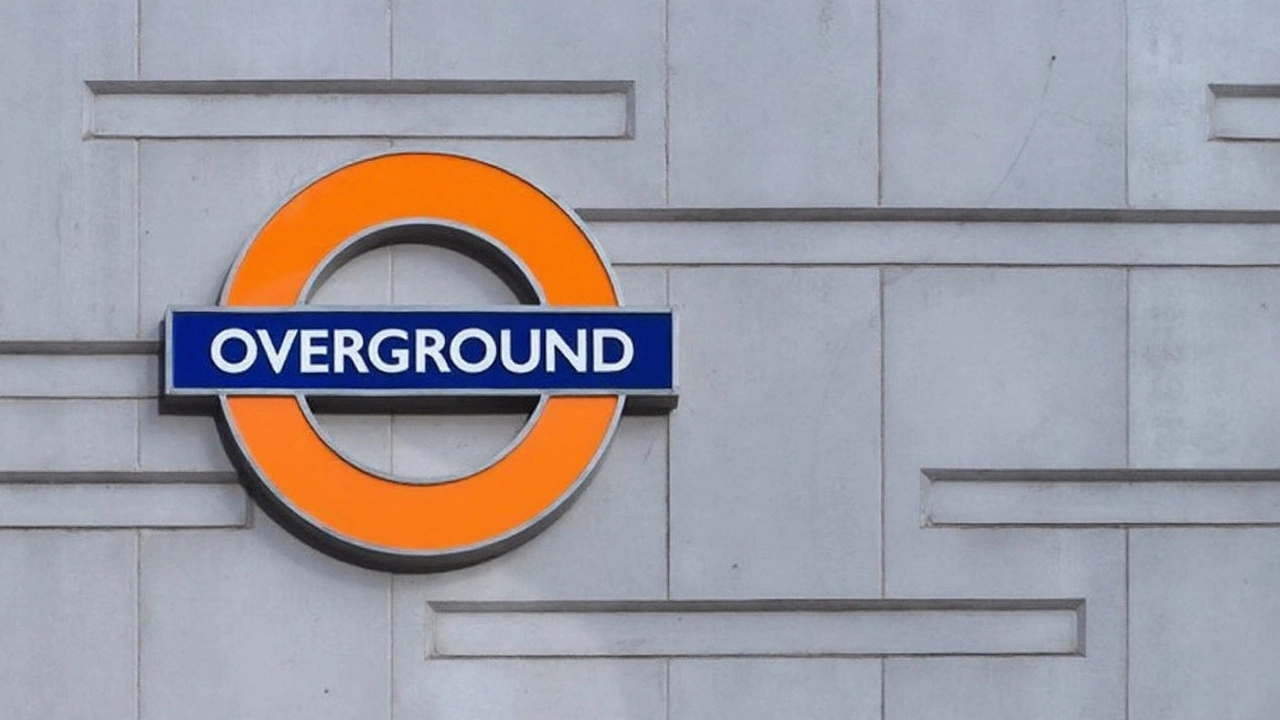What’s happening and when
Coldplay moved two Wembley Stadium dates before a single picket line went up. That’s how disruptive next month’s Tube strikes are expected to be. London is heading for its first citywide Underground shutdown since March 2023, after RMT members voted to walk out in a row over pay, fatigue, shift patterns, and a union demand to reduce the contractual 35-hour week — something London Underground says is neither practical nor affordable.
The headline: from Sunday 7 to Thursday 11 September 2025, expect little to no service on all London Underground lines. Industrial action begins earlier — from Friday 5 September — but the five days from 7–11 September are set to be the most severe. Knock-on effects will spill over onto other modes, especially the lines that remain open.
One big question has dominated commuter chats: will the London Overground be affected? In short, it’s set to run a normal timetable. Transport for London says Overground services — now branded as the Lioness, Windrush, Weaver, Liberty, Mildmay, and Suffragette lines — should operate as usual. But “as usual” doesn’t mean “as normal.” With the Tube largely shut, trains will be heaving, platforms will be managed with one-way queues, and some stations could close temporarily for crowd control.
The Elizabeth line and trams are also expected to operate, again with very heavy demand and possible queuing at busy hubs. The Docklands Light Railway adds another wrinkle: DLR staff will strike on two days — Tuesday 9 and Thursday 11 September — which will hit links through the Docklands and to London City Airport.
Here’s the key timeline at a glance:
- Fri 5 Sep: Industrial action begins (limited early impacts on the Tube).
- Sun 7 – Thu 11 Sep: Main strike period — Underground services reduced to little or none across all lines.
- Tue 9 & Thu 11 Sep: Separate DLR strikes.
Outside the Tube, buses and National Rail are due to run. They’ll be much busier than normal, especially during peak hours and around big interchanges. Expect longer waits, slower journeys, and crowd management at stations that are open.
How to travel: what’s running, crowd hotspots, and smarter routes
Why the Overground is different: it’s operated by Arriva Rail London under a TfL concession, and its rosters are separate from London Underground. That’s why it can run when the Tube can’t. The same logic applies to the Elizabeth line, which is run by MTR Elizabeth line. Even so, shared stations and interchanges can get overwhelmed, so staff may limit entry for safety.
What to expect, mode by mode:
- Underground: Little to no service from 7–11 Sep. Some lines or stations could also be affected at the edges of the strike days while trains and staff get back in place.
- Overground: Timetabled to run, but very busy. Temporary station closures or one-way systems possible at hotspots such as Highbury & Islington, Whitechapel, Stratford, Willesden Junction, West Hampstead, Clapham Junction, Canada Water, and Euston (mainline).
- Elizabeth line: Running, but with heavy crowding and queues at central stations like Paddington, Tottenham Court Road, Farringdon, Liverpool Street, Canary Wharf, and Whitechapel.
- DLR: Running except for strikes on Tue 9 and Thu 11 Sep. On those days, expect big pressure on buses in the Docklands and around London City Airport.
- Trams (south London): Services planned as normal, though crowding likely where people are rerouting to rail hubs like East Croydon or Wimbledon.
- Buses: Operating, with much higher demand. Busier routes may see full buses passing stops and local diversions if roads clog.
- National Rail: Trains will run, but expect packed services into and across London, especially where they connect with the Overground or Elizabeth line.
Overground line guide: if you’re unfamiliar with the line names introduced last year, here’s what they broadly cover:
- Lioness: Euston–Watford Junction DC services.
- Mildmay: The North and West London corridors, linking Richmond and Clapham Junction to Stratford via Willesden Junction and Highbury & Islington.
- Windrush: The East London line, linking Dalston/Highbury & Islington with Clapham Junction, Crystal Palace, New Cross, and West Croydon.
- Suffragette: Gospel Oak–Barking Riverside.
- Weaver: Liverpool Street routes to Enfield Town, Cheshunt (via Seven Sisters), and Chingford.
- Liberty: Romford–Upminster shuttle.
If your usual Tube route is out, these Overground corridors can keep you moving, but plan for queues at interchange stations. Staff may direct you along specific routes in and out to manage crowds. Give yourself more time than you think you need — and then some.
Airport travel tips:
- Heathrow: Piccadilly line disruption means the Elizabeth line or Heathrow Express from Paddington are the best bets. Both will be busy; build in extra time for queues at Paddington and central stations.
- London City Airport: The DLR usually does the heavy lifting here. On Tue 9 and Thu 11 Sep, consider buses or a taxi to National Rail or the Elizabeth line instead, and allow plenty of time.
- Gatwick and Stansted: Use National Rail. Reaching Victoria (for Gatwick Express/Southern) or Liverpool Street/Tottenham Hale (for Stansted Express) may be easiest via the Elizabeth line, Overground, or buses, depending on your starting point.
If you can work from home, do. If you must travel, try to shift your hours. Off-peak windows — mid-morning and early afternoon — will still be busy, but a shade less intense than the 7–9am and 5–7pm crunch.
Practical ways to save time and stress:
- Map an Overground-first route: For north London, the Mildmay line links Richmond/Clapham Junction to Stratford and West Hampstead. In south London, the Windrush line connects Clapham Junction to Canada Water and Croydon. In the east, the Suffragette (Gospel Oak–Barking Riverside) can link you to c2c at Barking.
- Use the Elizabeth line as a Central line alternative: It connects Paddington, Bond Street (via Tottenham Court Road interchange), Farringdon, Liverpool Street, Whitechapel, Canary Wharf, and Stratford at high frequency.
- Expect station controls: Canada Water, Whitechapel, Stratford, and Highbury & Islington often operate one-way systems during disruption. Queues outside are normal; bring water if you face a long wait.
- Consider walking short hops: Many Zone 1 trips are faster on foot than waiting in a queue — think Liverpool Street to Bank/Monument, Euston to King’s Cross St Pancras, or Waterloo to London Bridge via the riverside path.
- Cycling as a plan B: Bike hire and personal cycles will spike in demand. If you ride, use lights, wear something bright, and plan a quiet-street route.
- Accessibility: Step-free routes exist across the Overground and Elizabeth line, but lifts can be taken out of service when stations are crowded. If step-free access is essential, check station status before you leave and allow extra time for diversions inside stations.
- Tickets and capping: Contactless and Oyster caps still apply across TfL modes. The Hopper fare lets you take unlimited bus and tram journeys within an hour for one fare. National Rail has its own rules for compensation; policies vary by operator.
Event-goers should keep an eye on venue announcements. The Wembley postponements are an early sign of how severely staff, equipment, and audiences will be affected by limited transport. Similar decisions could follow if promoters or clubs can’t be confident fans and crews can get in and out safely.
Why talks matter now: the RMT’s mandate centers on pay, fatigue management, extreme shift patterns, and a shorter working week. London Underground is pushing back on cost and practicality. The gap isn’t small, and with five consecutive strike days at the core of the plan, the city’s transport system will feel the pinch even if some services run.
If you’re weighing your options by area:
- West and northwest: Lioness (Euston–Watford Junction) and the Elizabeth line at Paddington can replace parts of the Bakerloo, Central, and Metropolitan corridors, with bus connections as backups.
- North and northeast: Mildmay and Weaver lines cover key flows via Highbury & Islington, West Hampstead, and Liverpool Street. Expect queues at these interchanges.
- East and southeast: Windrush and Suffragette lines help connect to south London and the Thames Gateway. Barking, Whitechapel, and Canada Water will be focal points for crowding.
- South and southwest: Windrush via Clapham Junction and the Trams network toward Wimbledon/Croydon can substitute for parts of the Northern and District line areas.
Safety first on packed platforms: follow staff instructions, don’t crowd doorways, and don’t try to hold the doors — it delays everyone and risks a train being taken out of service. If a platform looks dangerously full, wait for the next train or walk to a nearby stop. In very busy periods, the second or third train can be faster than spending ten minutes trying to board the first.
Expect a slow restart after the last strike day. Even when the walkout ends, it takes time to get drivers, trains, and depots back in sync. Early mornings can be patchy before the system returns to a full timetable.
The bottom line for the strike week: the Tube will be largely shut from 7–11 September; the Overground, Elizabeth line, buses, and most rail will keep London moving, just at a slower, more crowded pace. Build in time, have a plan B, and if your job allows, skip the crush entirely by staying home for those five days.


